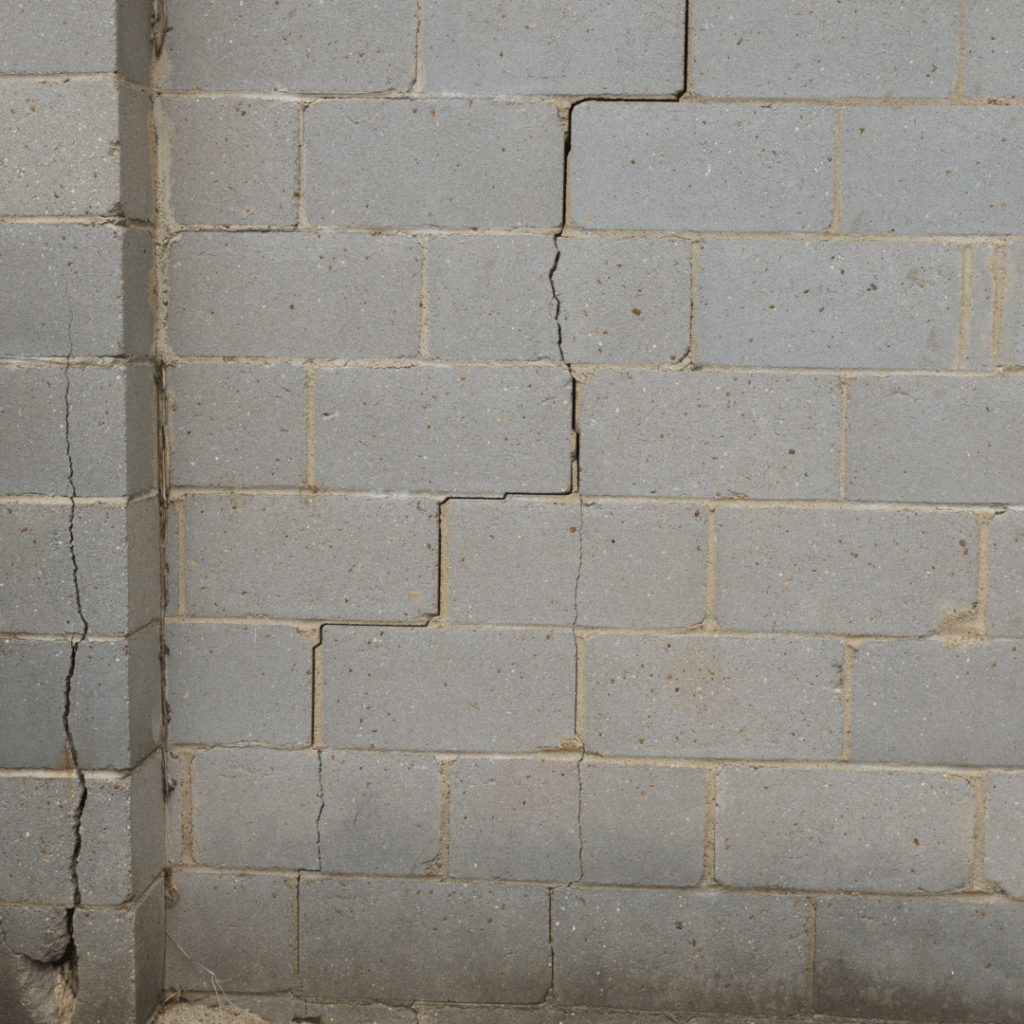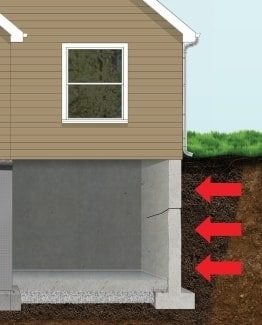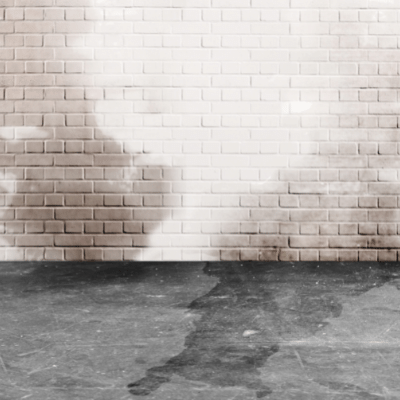Each foundation comes with its own set of potential problems, and basement foundations are no different. Whether you experiencing settlement related issues, bowing walls or water infiltration, Jerry’s Waterproofing has the basement foundation repair solutions to solve your structural woes.
Problems Faced By Basement Foundations
Foundation Settlement

Settlement is an issue that can affect all foundations, although it might look a little different in some than others. Settlement is when at least a portion of the foundation begins to sink, or settle, into the ground.
Almost all foundations experience some settlement, usually shortly after the home is built. That might cause hairline cracks but no other ongoing structural issues. If the home experiences more significant settlement, especially if some parts of the foundation settle more than others. This, called differential settlement, can place a lot of stress on the structural components of the home. Walls, floors and even ceilings can crack. Windows and doors can stick because the settlement throws the home out of alignment. And the more settlement occurs, the worse the problems are going to get.
How We Fix Foundation Settlement
At Jerry’s Waterproofing, we use foundation piering systems to combat settlement. We use either helical piers or push piers, depending upon issues such as bedrock depth and soil conditions. In either case, we sink the piers, which consist of long metal rods, down until the reach a load-bearing level of soil. We then hydraulically lift the foundation back to level before attaching the piers to the foundation’s footing. We then transfer the weight of the home onto the piers, creating a solution that not only levels your home but also prevents future settlement, solving your basement foundation repair needs.
Bowing Walls

One problem that is experienced most frequently by basement foundations is bowing walls. These occur when pressure from the soil on the outside of the basement wall becomes too great for the wall to withstand. The wall will begin to crack horizontally and bow inward along the crack line. Excessive amounts of water in the soil around your foundation frequently is the culprit.
This can lead to two issues. First, remember that water that is likely causing the cracking in the first place? The cracks give it a perfect place to gain entry to your basement. Second, as you can guess, a cracked and bowing load-bearing wall will not remain structurally sound. If you put off repairs too long, you might end up needing to replace the entire wall, which is an option you should avoid if possible for a number of reasons.
How We Fix Bowing Walls
We use three different methods to repair bowing walls. Which we use depends on items including the extent of the bowing and the accessibility of the exterior of your basement walls.
- Carbon Fiber Repair: In this method, we run carbon fiber strips vertically at intervals along the affected wall. Carbon fiber has a massive tensile strength to weight ratio, allowing it to stabilize your wall and prevent any additional bowing. This is the lowest-impact of the repairs (carbon fiber strips are flush to the wall and, with the right kind of paint, you can even paint over them). It doesn’t, however, straighten the wall on its own. If your wall is bowed enough where it needs to be straightened as well as stabilized, you will either be using a different method or need to do additional work along with the carbon fiber.
- Helical Tiebacks: The helical tiebacks look much like helical piers do. Instead of being drilled deep into the soil, however, they are designed to be installed laterally. We excavate the area around the outside of the basement wall, lowering a steel bar with helical plates attached. Then we run a portion through a hole drilled in the basement wall. We then screw the tieback into the soil, anchoring the wall in place, before attaching it to the inside of the basement wall by a plate. By tightening the tiebacks, some degree of straightening can be accomplished.
- Plate Anchors: These operate similarly to helical tiebacks in that they also anchor in the soil. This provides a counter to the force pushing inward on the walls. They don’t have helical plates, so you don’t need to excavate around the basement wall. We instead excavate at the point where the plate anchors end. A plate is the attached to the end of the metal post. We fill the hole and tighten the plate anchor to allow it to stabilize the wall.
Basement Water Leaks

Have you ever experienced the sinking feeling of going down the steps to your basement after a storm and realizing the ground was covered in water? If not, you are lucky. If not, it comes with the knowledge that, 1. you have got a fair amount of cleanup ahead of you (even moreso if you have a finished basement) and 2. this could easily happen again the next time it rains.
Water can enter your basement in a number of different ways: cracks on the walls, cracks on the floor, the joint between the slab and the wall. Regardless, if water gets in, you should have it fixed. In some cases, these water leaks aren’t a foundation problem. In other cases, they are a symptom of larger structural issues.
How We Solve Basement Water Leaks
Fixing basement water leaks generally involves a couple of steps.
First, we determine how the water is entering the basement. Without knowing this, we can’t know both the best way to solve the problem and whether there is a larger issue at play that we must solve as well.
Once we have determined the underlying cause of the leaks, and made any foundation repairs needed, we can get down to the waterproofing.
Generally, there are two categories of waterproofing, interior and exterior. Interior waterproofing can range from sealing basement cracks if a small trickle is entering from one specific location to installing an interior drainage system. With an interior drainage system, we remove the concrete floor around the perimeter of the basement. We then lay drain tile and pipes. We drill weep holes at the base of the wall so any water that infiltrates the walls will drain into the perforated drainage pipe. This then carries the water to a sump pit and, as necessary, the sump pump pumps it into the yard.
Exterior waterproofing can involve either installing waterproofing board on the exterior of the basement walls, using French or channel drains to direct water away from your foundation or both. Because the interior work is confined to just the basement, it is usually the lower-impact of the two.
Need Basement Foundation Repair Services in the Omaha area? Call Jerry’s Waterproofing
Jerry’s Waterproofing offers advanced basement foundation repair services for all of the problems listed here in Omaha and Lincoln, Nebraska; Council Bluffs, Iowa; and the surrounding area. Contact us today for a free estimate.



